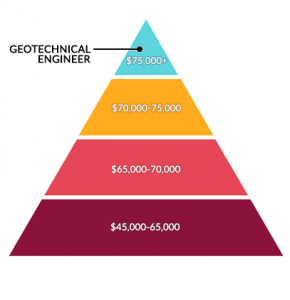More About Geotheta
More About Geotheta
Blog Article
Geotheta Can Be Fun For Anyone
Table of ContentsGet This Report about GeothetaThe Ultimate Guide To GeothetaGeotheta Things To Know Before You BuyThe 7-Second Trick For Geotheta
They work together with civil designers, structural designers, architects, and various other specialists to incorporate geotechnical factors to consider into the overall job design and building procedure. This needs effective synergy, coordination, and communication to ensure that the geotechnical elements align with the job goals and satisfy regulative requirements.Mining & Materials Design: Principles of boring, penetration prices, and elements impacting the choice of exploration approach. Qualities of dynamites, firing systems and blast patterns. Blasting methods in surface and underground functions. Special blasting methods at excavation perimeters. Resonance and noise control. Mechanical and continual approaches to fragmentation, including longwall shearing and fullface boring.
Modelling of fragment and bit dimension distributions; comminution as a transfer feature. Comminution innovation: squashing, grinding, dimension classification. Integrated analysis of fragmentation and comminution procedures. Provided by: Mining & Materials Design.
Get This Report on Geotheta
Bachelor's degree programs in civil, geotechnical, geological, and ecological engineering generally last 4 years and consist of basic education and learning courses in English, social science, and the humanities, as well as programs in advanced mathematics, structural geology, and fluid mineralogy. (https://pxhere.com/en/photographer/4325446)
Geotechnical engineering involves the analysis of the soil and rock problems at a specific website, and their effects for the growth of that website. As many frameworks count on the ground for assistance, it lacks surprise that a comprehensive understanding of the ground problems, and the suitability of structure systems, are essential to the long-lasting security and efficiency of the structure or framework.
Specialising in the investigation of geological developments and ground behaviour, geotechnical designers perform clinical examinations and screening to recognize the impact these geological developments might carry the style and building of building, civil and facilities jobs. This proficiency is crucial for the design and building and construction of buildings, roadways, passages, dams, bridges, and water supply and sewer system.
The geotechnical group at Douglas Allies consistently speak with architects, design designers, developers, and home builders to make recommendations on style and advancement propositions to ensure that the built structures are accordingly designed for the ground problems. As an example, the style of footing systems requires to think about the weight of the framework, the capability of the ground to sustain that weight along with activity resistances and effective building.
The Basic Principles Of Geotheta
This job is considerably streamlined by the use our Douglas Map geospatial platform that makes this details easily easily accessible in an easy to use internet internet browser interface. A geotechnical designer will direct the drilling of boreholes and examination pits to gather soil and other samples, and likewise examine surface area attributes and ground direct exposures to form a geotechnical model of the subsurface problems.
Depending on the project kind and ground conditions experienced, research laboratory screening might among other things analyze stamina, compressibility, reactivity and/or permeability of soil and rock examples. Hereafter data is gathered and looked at, the results are made use of for a geotechnical design of the website, which is generally provided as sections across the website.

A geotechnical investigation by nature can just analyze the ground problems at the places pierced or excavated. Natural variants in dirt and rock conditions can take place throughout a site and in between examination places. It is as a result excellent technique that the geotechnical designer be preserved throughout construction of the job to provide on-site confirmation that the ground conditions come across are regular with the assumptions and suggestions given in the geotechnical investigation record.
Geotheta Fundamentals Explained
Geotechnical engineers use their in-depth knowledge of dirt and rock to analyze danger and address troubles on varied facilities projectsGeotechnical engineering is a specialist branch of civil design which considers the practices of earth materials and the application of soil and rock technicians. Engineer of Record. As a geotechnical engineer, you will assess the physical, mechanical and chemical residential properties of dirt and rock in order to create foundations, maintaining structures and earthworks
Geotechnical design is carefully linked to and overlaps with, both design geology and ground design - https://geotheta.bandcamp.com/album/geotheta. It's possible to specialise in geotechnics or benefit a geotechnical firm yet be called a design geologist or a ground designer. As a geotechnical designer, you'll require to: develop and keep relationships with customers click here for info and various other experts included in the website, throughout each projectmaintain safety and security requirements on website be mindful of expense ramifications when you make recommendationsstudy geological maps and aerial photographs from a variety of resources and from various time periodsexamine building and construction plans to see exactly how feasible they are based on your understanding of the siteinvestigate threats or geological risks for the sitesearch for ecologically sensitive features, such as garbage dump begin to establish accurate and interpretive ground modelsplan area investigationsdrill and evaluate samples of bedrock, soil, groundwater and added materials supervise other experts on sitesolve technical concerns as they emerge, such as unforeseen frameworks at drill sitesmonitor conditions during and after construction to make certain frameworks are steady in the brief and long termadding information accumulated on site to your first researchcreating geotechnical estimations, illustrations, and 2 or three-dimensional computer designs interpreting the datamaking suggestions concerning the proposed use the site

Report this page